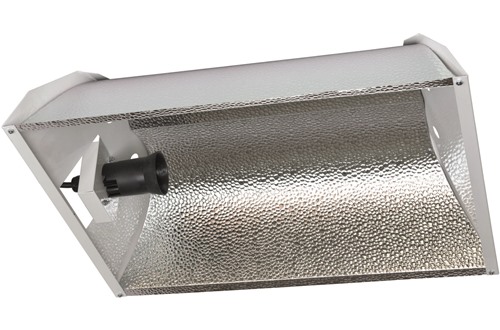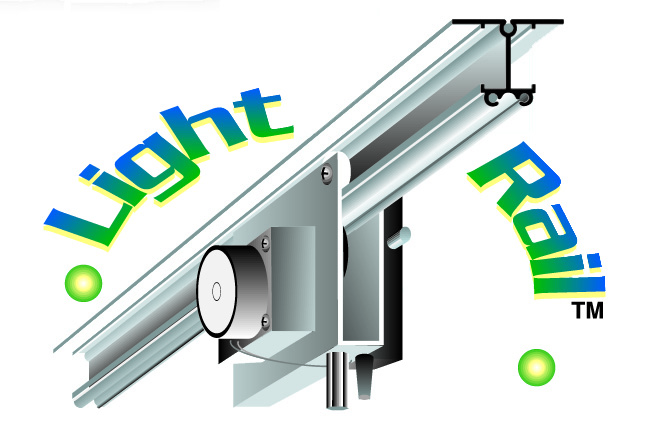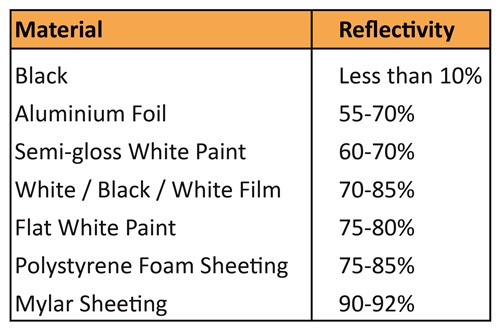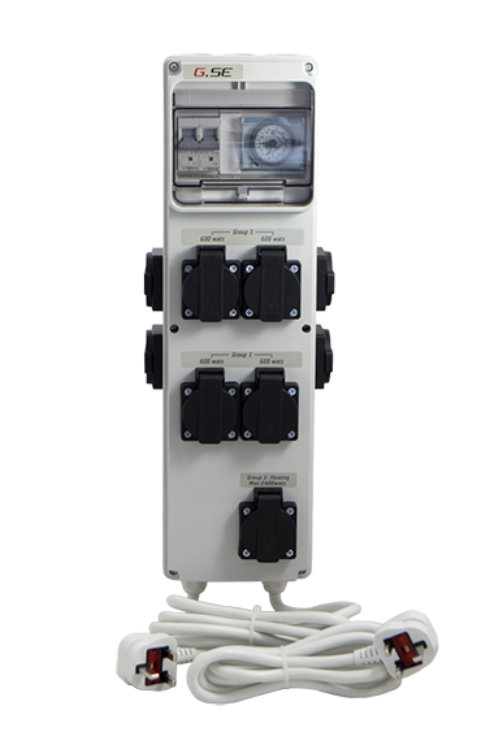Lighting
With the correct lighting, you can grow almost any plant indoors. The most important thing to know is the level of light that a particular plant needs for successful growth. For example, houseplants and ferns do not need as much light as salad greens and culinary herbs. Tomatoes, orchids and flowering plants require the highest intensity light of all. The most common mistake made by indoors growers is to provide inadequate light, usually because they try to cover too large an area with the light available. It is important to remember that a smaller area with adequate light will give better results than a larger one without.
Power consumption
The amount of electricity needed to grow plants indoors can be surprisingly small and it should never be seen as a reason not to go ahead. The beginner is strongly advised to work out power consumption before starting, to ensure that the operation will be cost effective. A few figures have been included here as guidance but you will need to check your local rates to see if they apply to you.
Based on the approximate rate of 8p per unit, it will cost 38p per 12 hour day to run a 400 watt light. This would translate to £34 on the average 90 day bill. If off-peak power is available and is used for seven hours out of the twelve, it would reduce that bill to around £25.

To grow vegetables, flowers and other light loving plants, the home gardener need look no further than the modern HID light which is simple to use and which will cover a large area in which the grower can place almost any type of plant. HID lighting has come a long way in the last few years. New developments in lamp and reflector design have improved their efficiency beyond anything imaginable a few years ago. Instead of being a specialised piece of kit for the commercial grower, they are now just another appliance that you simply hang up and plug in. We have no hesitation in saying that this is the single most valuable purchase for the keen hobby gardener because it will extend gardening pleasure into 12 months and allow for the cultivation of many unusual and delicate plants that are otherwise unsuitable for this climate.
HID lights are available either with remote ballasts or as fully integrated units. Some growers still prefer the remote fitting because the ballast can be placed on a shelf and only the lightweight reflector unit needs to be suspended from the ceiling.
There are basically two types of HID lighting available to the hobby grower. Metal Halide, with its blue white light was long recognised as the best all round light for plant growth. While the High Pressure Sodium with its red / orange light was understood to be the best for the flowering and fruiting cycle of plant growth when light of this colour is more readily used. Many growers still follow this pattern, either by using Halides for the first part of their growing cycle and switching to Sodiums during the flowering cycle, or by mixing the two together throughout the crop.
Modern research however, has indicated that the latest Sodium lamps which have enhanced levels of blue white light are more than adequate light sources for every stage of plant growth. These lamps are known as “Agro” or “PLANTA” and they are used by many growers for their entire growing season covering many different types of plant. Sodium lights are the first choice of professionals and most of the recent research is in this area. Sodiums are much more powerful and efficient than Halides and they are improving all the time.
HID lights come in various wattage from 250 up to 1000 and beyond. All these lights can be used with good results provided they are well located in the growing area. Most common wattage are 400 and 600 but some growers prefer the 1000 watt units for their sheer power. The most efficient wattage for indoor growing is the 600 watt sodium lamp which produces an astonishing 92000 lumens (light output).
The best products are based on years of research and computer assisted design and on access to the very latest in lamp technology. The result of all this investment is seen most easily in the best reflector designs which are fine tuned by years of experience to reflect the absolute maximum level of light onto the plant area. If you compare well designed reflectors such as SuperNova with the basic folded metal designs put out by other manufacturers, it will be easy to see why they will give you superior results. It must be remembered that any 400 watt light will take the same amount of energy (money) to run but a well-designed reflector will increase the light available to the plant by up to 30%. This extra light will not add to your running costs, it is free!

A lamp moving overhead will increase the intense light that the majority of plants receive. This is a more efficient way to use an HID lamp and should be considered by every grower. Fortunately technology has come to the growers’ rescue yet again in the form of the amazing Light Rail 4.0. This simple but highly effective device is based on a six foot rail or track with a precision engineered carrier that quietly moves your light back and forth over the growing area. The sun moves so why should not your light? Light Rail 4.0 allows you to cover a greater area with no significant electricity use and ensures that all plants receive the same level of light.
This ensures that you will have uniform growth and the plants in the corner will grow as well as those in the centre. It saves you having to move your plants around under the light source. In addition, Light Rail 4.0 eliminates shading so there will be much more even growth from the top to bottom of the plant. Another advantage of light movers is that you can get your lights much closer to the plants without burning the foliage. It is a great way to get better results from your lights without spending more on electricity.
It is a worldwide product that has been extensively tested and developed under actual growing conditions. Using Light Rail 4.0 will ensure that you can adapt your growing area to changing circumstances or move easily into a new area. Basically, a linear mover such as Light Rail 4.0 will be best suited to square or rectangular growing areas while the rotating movers will work best in circular rooms.

Proper attention to reflectivity can increase the amount of available light by up to 30%. It is important that the plants are surrounded as closely as possible by reflective surfaces. This can easily be achieved by placing the lamp in a corner of the room and constructing two lightweight, mobile walls of reflective material which can be moved out as the plants grow bigger. Walls can easily be painted with flat white paint which is an excellent reflector. If it is not possible to paint the walls, they can be hung with Black / White plastic film which can also be used for the floor.
Polystyrene foam sheeting can also be used in many different ways. It is superbly reflective material and highly recommended. The ultimate reflective floor covering is brilliant white vinyl which is tough and hard wearing. The most reflective material of all is the space age material MYLAR which is like a flexible mirror and can reflect 92% of light back onto the plants. The table (on the right) illustrates the reflective value of the various materials available to the home gardener.
Contrary to popular belief, aluminium foil does not provide a good reflective surface even when it is flat. As soon as it becomes creased and crinkled, which it inevitably does, it will become even less effective. A far better reflective surface can be achieved with a couple of coats of flat white paint, windows and fireplaces can be covered with Black / White or White / Black / White plastic film which also makes an excellent reflective floor covering.

The use of an efficient timer is absolutely essential for the indoor or greenhouse grower. Timers are used to automatically turn your lighting system on and off. Indoor plants require between 12 to 18 hours of light a day and it is essential that timers are reliable. A failed timer could mean that lights remain on for 24 hours which will have a big impact on your power bill and could also completely disrupt the flowering cycle of certain plants such as chrysanthemums which require specific light hours to flower successfully.
Ordinary plug-in timers can be bought cheaply enough at your local DIY store but they are not suitable for more than one or two lights and they can be prone to failure. For complete peace of mind, a mechanical timer of industrial quality is recommended, such as our GSE timer box. These timer boxes manage several inductive loads such as high pressure lamps simultaneously. They are well-engineered contactor-based control systems for up to 12 x 600W loads. Two models include an added heating socket. These boxes are complete with Intelligent Power Management which only activates the heating circuit when the lamps are off.
Check out our product range here
Want to get in touch? You can email us: enquiries@growthtechnology.com
Your login details have been used by another user or machine. Login details can only be used once at any one time so you have therefore automatically been logged out. Please contact your sites administrator if you believe this other user or machine has unauthorised access.

